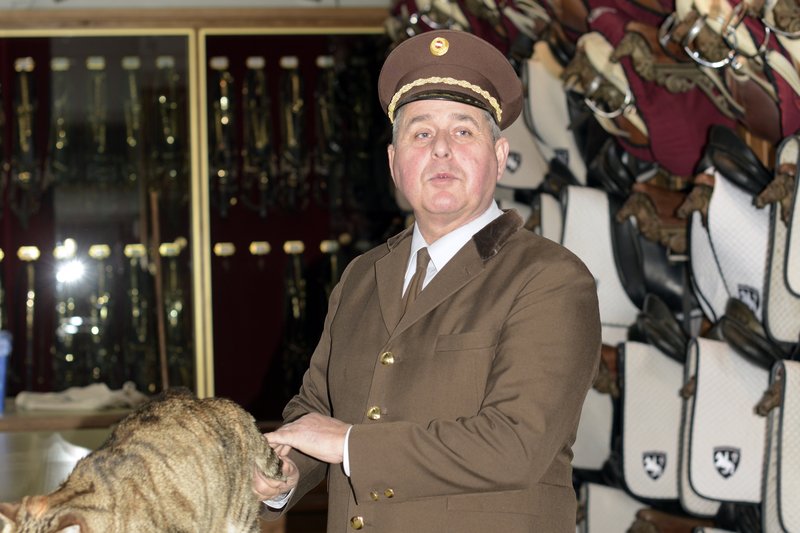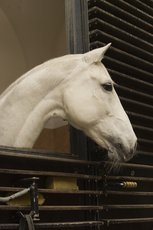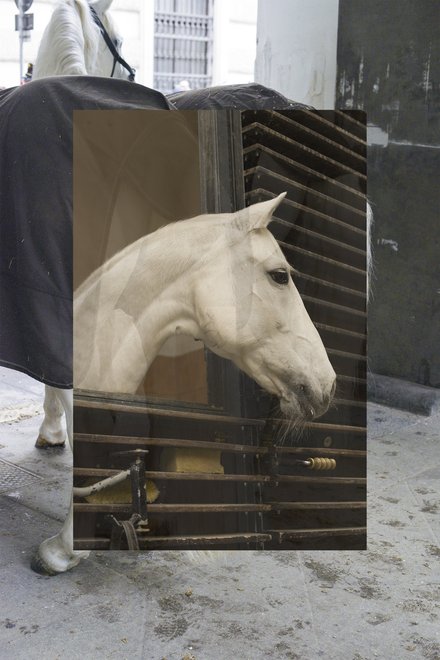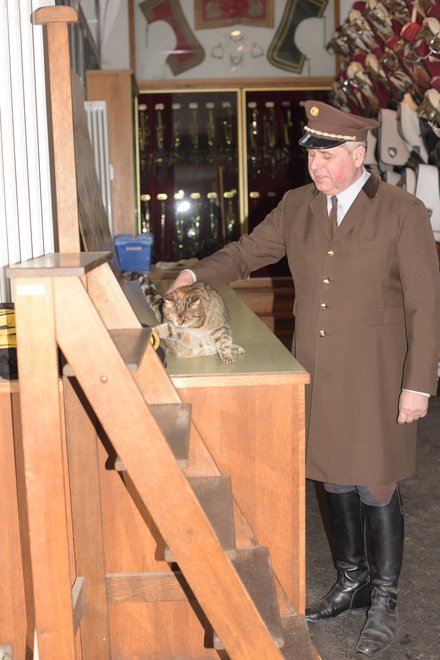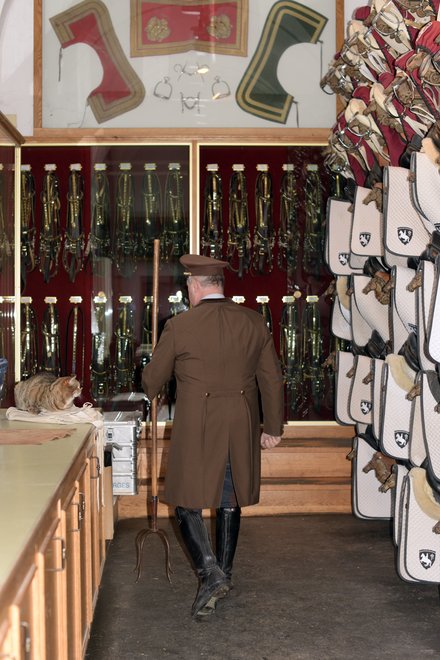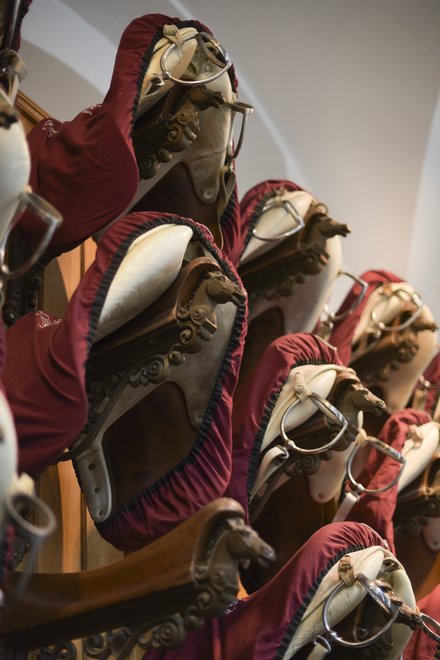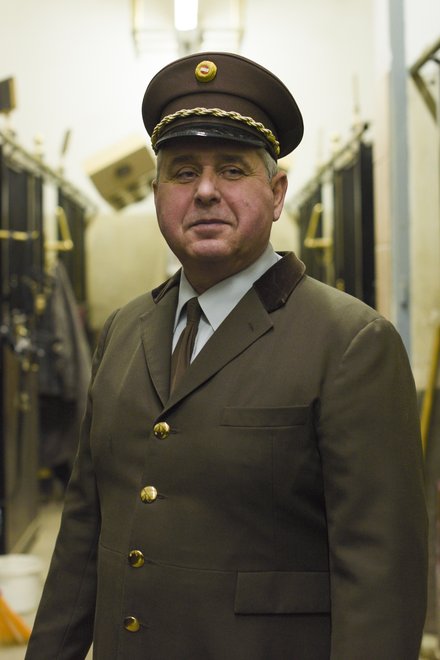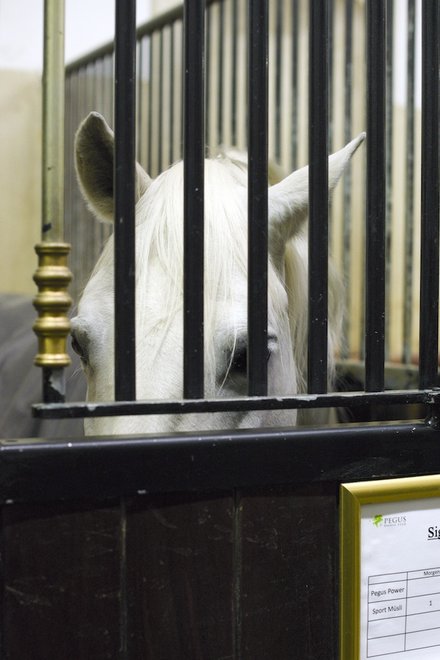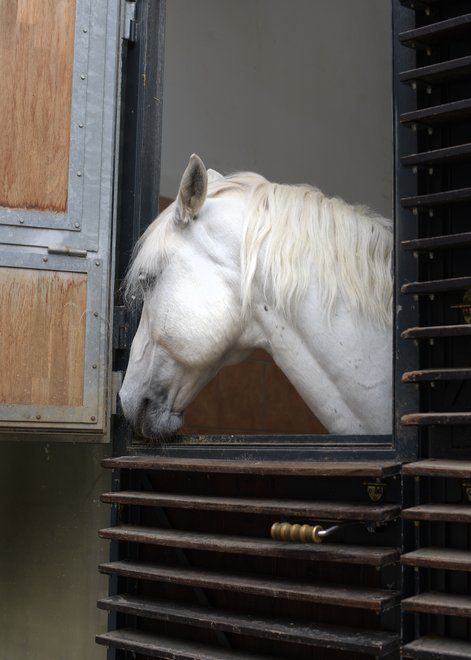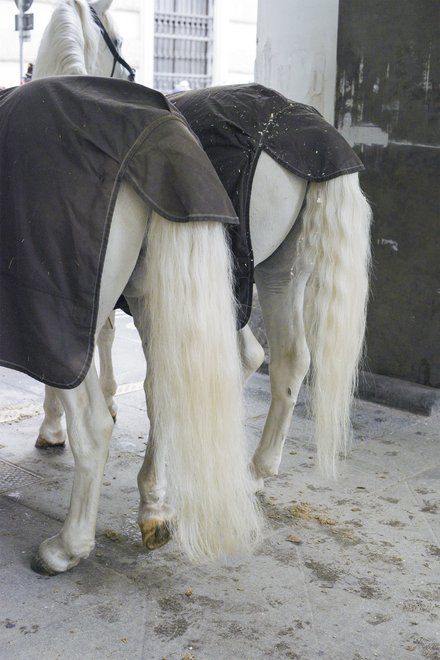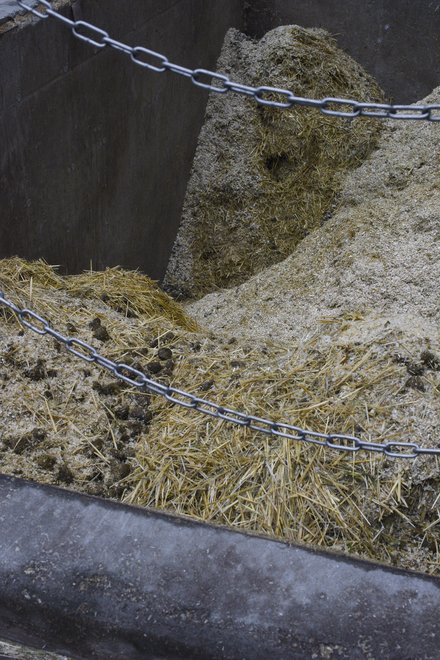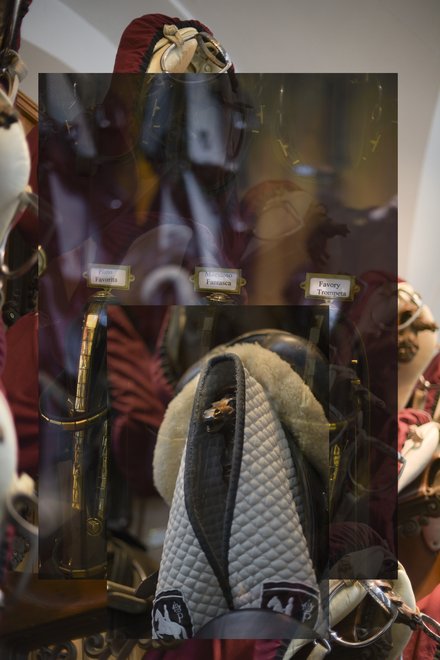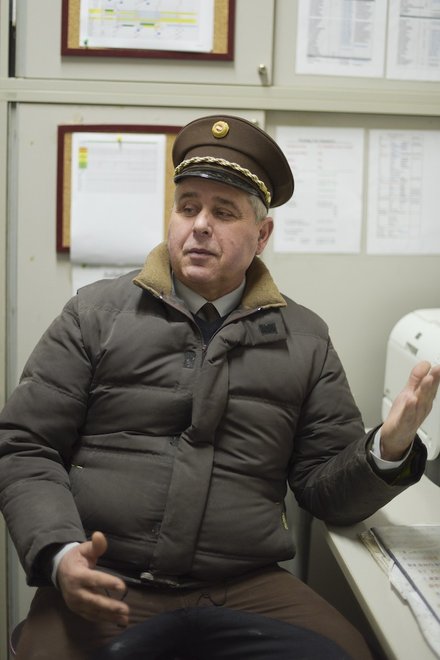Wiener Kulturerbe
A Lipizzaner stallion neighs, the cell phone of former Chief Stable Master Johannes Hamminger is ringing. But the noble horses of the Spanish Riding School, a symbol of Viennese culture and tradition, are indifferent to all this. The four-legged athletes calmly trot out from their stables and across the yard for the daily morning exercise they need to be fit for the centuries-old dressage movements. Why do we consider horses so beautiful? What do horses find beautiful? Can a horse feel shame or be offended? Hamminger provides us with some answers.
“Would you trust a horse with your life?” “Absolutely!”
Lisa Lugerbauer: Would you ever eat Leberkäse made from horse meat?
Johannes Hamminger: No, I wouldn’t. I definitely wouldn’t eat that.
If you could talk to a horse—in human language –what would you tell the horse?
I’d let it know that I enjoy looking at it and that I admire it. Above all, I admire its willingness to perform—a horse can do amazing things! They’re wonderful creatures.
How do horses communicate?
Horses have different ways of speaking. They pin their ears back, neigh, lift or lower their head and their feet, or move their tail. When a horse stands apart from the group, that means something. It’s no different with their glances. Horses are very sensitive.
“There are horses that do have something like a sense of shame.”
What makes a horse beautiful to you? The eyes, the coat, the hooves?
I think the whole horse is beautiful. It’s one of those creatures that has a certain expressiveness. Sure, one horse might have more beautiful eyes than another, but you always have to look at the horse as a whole. I find a horse’s movements particularly elegant and beautiful. In general, I think all horses are beautiful, no matter if they’re white or black. But since you’re asking: Among our 70 horses we currently have two bays—and they do stand out a lot, to me at least. (Editor’s note: According to legend, the Spanish Riding School will continue to exist as long as there is a bay stallion in the Imperial Stables.)
I fell in love with the beauty of horses as a child. My parents owned horses, and it was clear from the beginning that I wanted to do something professionally with these beautiful animals. But I would never have dared to dream that I would rise to such a position and take this path.
Do horses feel shame?
There are horses that do have something like a sense of shame. When a horse throws a rider that it’s very close with, you can see that it’s shocked. It will look down at you and say with its eyes “Oh, I didn’t mean to do that!”
“I think the whole horse is beautiful. It’s one of those creatures that has a certain expressiveness.”
What do horses like to do?
That’s hard to say. They’re very individual; each one has its own preferences. You can’t generalize. We once had a stallion who had a show every Sunday, but then was replaced. He was in a terrible state because he wasn’t allowed to perform in the show. He went in circles and asked “Isn’t it my turn today?” That was impressive. You can tell that the soloists among our horses have an urge to present themselves. They enjoy hearing thousands of people applauding. I experienced something similar once in Piber, at the Lipizzaner stud in western Styria. There was an older stallion there who had already been retired for ten years, and he was given another chance to show off what he can do. It was obvious that he really enjoyed being the center of attention again.
Do you know what horses find beautiful?
That would be going too far. After all, when we’re standing by a meadow, I can’t exactly ask a stallion “Do you think the meadow is beautiful?” What could he possibly answer? He would just run into the meadow and eat the grass.
Would you trust a horse with your life?
Of course! Absolutely.
“I fell in love with the beauty of horses as a child.”
What was the most moving experience you’ve had with a horse?
I’ve had so many. But I do remember one incident particularly well. I was still a student at the time, just starting my career at the Spanish Riding School. I was on stable duty, had to make the rounds and take out the manure—that’s part of the training. One day I wanted to take a short break. I had to stay with the horses, since I was responsible for them, so I sat down in the stall with my favorite horse. I sat there quietly and didn’t move. The horse was irritated. I noticed that he was worried about me. First the stallion gave me a careful nudge. I still didn’t move. That’s when he really began to worry that something was wrong. He started tapping me with his foot, massaging my head with his. That was really touching and impressive. After a few minutes I let him off the hook and began moving again.
What can a human do wrong, what can a horse never forgive?
If you treat it badly and beat it. You just don’t do that.
Can horses forgive, too?
Yes, they can forgive, but if you’ve insulted them they become more cautious. Once they’ve had a bad experience, no matter with whom, it takes a certain amount of time to rebuild their trust.
“Their perfection really is a miracle.”
What commands do you use with the horses? Do you click your tongue or say “gee up”?
No, you only say “gee” and “haw” when you’re in a carriage. If you want to go forward, you just speak in normal human language and say “go forward” or “come on, let’s go!” But we don’t have to give the horses commands that way. The rider has the crop and the leg aids for that. We try to win over the horses in our stable by speaking to them calmly, so that they don’t get scared. Then you can get them to go where you want them to go.
Are you a horse nut? What makes you nuts for horses?
Sure, I’m a horse nut through and through, it’s in my genes, so to speak. My entire family consisted of, as you say, horse nuts. Accepting and respecting this creature as a magnificent animal and companion becomes part of your flesh and blood. Horses have always done and still do a lot for people. Once you’ve seen what a horse is capable of during a performance—the piaffe, passage, one-tempi changes, the classic dressage exercises—their perfection really is a miracle.
The Lipizzaner horses and the Spanish Riding School are the emblem of Vienna, does the marketing annoy you sometimes?
On the contrary, I think it’s amazing. We’re happy that the Spanish Riding School still exists. We celebrated our 450th (!) anniversary a few years ago. It’s wonderful that an institution so rich in tradition has survived all these years. Things could easily have turned out otherwise.
What does your day-to-day work at the Spanish Riding School consist of?
We follow a very precise schedule. Our day begins at six o’clock with the feeding—hay, oats, sometimes also muesli, apples, or carrots. The riding begins at seven o’clock. Each rider has six to seven horses. Every half hour he changes horses. It’s very important to me that the grooms and the horses are a good fit—they have to be a real team. Inconsistencies and stress affect the animal. The more harmonious, the better. In the summer we ride out to the Burggarten, the former royal gardens. We also have an exercise machine for twenty stallions. As we speak, we have 18 horses in the exercise machine, which is an additional way for the animals to get some movement.
To maintain their weight?
To relax! They can have fun in there, act up, just do what they want. We don’t have a pasture here in the Vienna’s first district, but we still have to give the horses a chance to move freely. You can picture the machine as something like a ski lift. The daily riding lasts until 12:40 sharp, then they do another round in the stepping machine, which is followed by lunch feeding. The second shift starts 2:30 and lasts until 10 o’clock. And then comes the third shift—so the horses are looked after 24 hours a day. This ensures that someone is on site right away in case a horse has a problem.
You also take the horses to the solarium. But not to get a tan, right?
The solarium helps the muscle metabolism. We also have magnetic field therapy, oil therapy, and activated “Grander water.” It’s very important that the horses get enough water, and, above all, good water. They have a very difficult digestive system, after all.
Sounds like the horses are pretty spoiled!
Our horses get a level of care similar to that of top athletes, also in regard to their medical treatment. But people have always taken good care of horses throughout history, since they were vital to the survival of many occupations, like farming for instance.
“A horse can recognize a person by the way they walk.”
You used to be a rider yourself, could you have told the horses apart with your eyes closed?
To recognize a horse with my eyes closed, just by the sound of its hooves, for example, would be difficult. But it wouldn’t be impossible either, I suppose. I’d have to specifically prepare myself—I would have to train for a month to perform a trick like that on a show like Wetten, dass..? And I could probably only pull it off with a handful of horses (laughs). On the other hand, a horse can recognize a person by the way they walk, they can hear very well and always know who’s coming.
Why does the Spanish Riding School only work with stallions? From a feminist mare’s perspective that’s not exactly politically correct.
That’s the tradition. The presence of mares unfortunately makes the stallions lose their concentration. With ladies around they would make mistakes and would no longer concentrate on the riders or their performances.
Since when have there been female riders at the Spanish Riding School?
In 2016, Hannah became the first horsewoman to be accepted into the team. No problem there. So far she is the only woman, though another will be joining soon—we currently have a female candidate.
Can horses be jealous?
Absolutely. When they vie for attention, they start tapping and pawing. It’s just the same with human siblings, you have to find a way to treat them equally. But there’s always a baby of the family among horses too.
What do you think of the new police horses in Vienna—is that still appropriate in this day and age?
The Spanish Riding School doesn’t have an official position on the subject, and our personal opinions remain personal.
You've retired by now, when do the horses get to enjoy their retirement?
That depends on their health. But they’re mostly in service for 23 to 25 years. That’s the normal retirement age. Then they either go to the village of Heldenberg in Lower Austria, which also serves as a summer residence for the stallions, or they return to their birthplace in Piber. One of our stallions is 40 years old, born in 1979. I’ve known him since he was a young stallion. When I retire I don’t want to own a horse anymore, but hopefully the Spanish Riding School will always be open to me.
Thanks for the interview!

